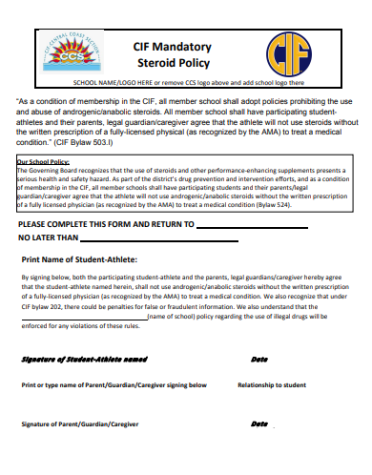
Check out his journalism website here: LINK


May 24, 2022
High school. A bustling environment filled with learning, friendship, and steroids? When one hears of a steroid scandal, our minds immediately think of the latest headlines in professional sports, such as the denial of Barry Bonds and Roger Clemens from the Baseball Hall of Fame.
However, the issue of unprescribed steroids in high schools is real and complex to solve.
Anabolic steroids are performance enhancers that are synthetic versions of testosterone, which is a hormone linked to facial hair, deepening of the voice, and, most importantly, muscle growth.
These “advantages” do come at a high cost, however.
“They are known to have a range of serious adverse effects on many organ systems, and in many cases, the damage is not reversible. They include fertility problems, impotence, high blood pressure and cholesterol, and heart and liver abnormalities. Boys may experience shrinkage of the testes or the development of breast tissue; girls may experience menstrual irregularities and the development of masculine qualities such as facial and body hair. Both may experience acne. Both boys and girls may also experience mood swings and aggressive behavior, which can impact the lives of those taking steroids and everyone around them,” said an FDA article on the issue of teenage steroid use.
According to an article from MedlinePlus, steroids also pose a risk for addiction, despite the lack of a “high.” Some withdrawal symptoms include fatigue, depression, loss of appetite, and sleep problems.
These adverse effects have made it clear to Carlmont coaches, such as head varsity baseball coach Ryan Hamilton that his players should stay far away from these anabolic steroids.
“Speaking on anabolic steroids specifically, they have no place in high school sports due to the long-term negative effects on high school athletes. Male adolescents also have some of the highest levels of testosterone and human growth hormone circulating in their bodies during this time and would not benefit from anabolic steroid usage compared to an older athlete,” Hamilton said.
The ethics of steroid usage have been made clear cut in the sports community. An article on bioethics from the Markkula Center for Applied Ethics at Santa Clara University best demonstrates this idea.
“Society cares because steroid use is a form of cheating. Since steroids work so well, they create an unfair advantage for those who take them, which breaks the social contract athletes have implicitly agreed to: We will have a fair contest. There are things we can and cannot do. Even if there were a safe performance-enhancing substance, if it weren’t available to everybody, using it would still be cheating,” said Michael Dillingham, the piece’s author.
As a result of all these consequences, the sale and possession of unprescribed anabolic steroids are illegal in the United States. The following excerpt can be found on the Diversion Control Division website:
“The Anabolic Steroids Control Act of 1990 placed anabolic steroids into Schedule III of the Controlled Substances Act (CSA) as of February 27, 1991. Under this legislation, anabolic steroids are defined as any drug or hormonal substance chemically and pharmacologically related to testosterone (other than estrogens, progestins, and corticosteroids) that promotes muscle growth.
The possession or sale of anabolic steroids without a valid prescription is illegal.”
According to a 2019 High School Youth Risk and Behavior Surveillance Survey, 6.7% of Californian high school students had taken steroids without a doctor’s prescription, which may not seem like much until the data is applied to a whole school.
High school students who had taken steroids without a doctor’s prescription by Rintaro Sato
Based on data from the 2018-2019 school year, Carlmont high school had an enrollment of 2,216. Theoretically, if the data from the previously mentioned study was applied to Carlmont, 6.7% of Carlmont’s students would be approximately 148 students.
Now, this obviously is not a number that can be trusted, but rather a number to put into perspective the problem of steroid usage in high schools. Carlmont very much may be an outlier to the stats, bringing the state average down.
That is exactly what longtime Carlmont athletic director Patrick Smith believes, citing the fact that he has never heard about any cases of steroid usage in his 13 years of being the Athletic Director for the Scots.
“Fortunately, I’ve never had that come to me or even any rumors of [steroid usage] come to me since I’ve been the athletic director and even prior to that, as a PE teacher,” Smith said.
However, due to the high numbers suggested from the previously mentioned High School Youth Risk and Behavior Surveillance Survey, the author has doubts about the lack of cases at Carlmont.
One potential reason that explains the lack of reported cases at Carlmont is the fact that there is no physical testing required for anabolic steroids to participate in sports.
“No testing at the high school level is required for steroid use,” Smith said.
Instead, there are simply online clearance procedures that student-athletes and their guardians have to complete, such as this waiver shown on the right:

While it would be great to have access to testing at Carlmont to crack the case of high school steroids, the potential cost of those tests handcuffs Smith and the athletic department.
“If you were to do a comprehensive steroid testing program for every athlete in high school, I think the costs would be very exorbitant. I don’t believe that the majority of high schools have the funds to afford those tests,” Smith said.
In a 2005 ESPN article about the costs of steroid abuse on society, the NCAA said that the cost for each steroid test was $271, which is indeed an exorbitant price to pay, especially for a public school such as Carlmont.
Because testing every student-athlete is undoubtedly out of the question, the last wall of defense seems to be waiver forms and an athletic honor code. Would this be enough to discourage student-athletes?
“I think that while most people would be morally inclined to follow these rules, others may use the lack of physical testing to their advantage,” said sophomore baseball player Benjamin Sunahara.
Another potential reason for the lack of reported steroid cases is simple: perhaps the lens needs to be widened beyond simply student-athletes.
In a study by Rebecca L Elkins, Keith King, Laura Nabors, and Rebecca Vidourek called “School and Parent Factors Associated With Steroid Use Among Adolescents,” the researchers found that “rates of steroid use differed significantly based on school and parent factors, but not sports participation.”
Outside of sports, while there is no official Carlmont policy against anabolic steroid usage, there is a reason for its absence.
According to administrative principal Grant Steunenberg, Carlmont follows the California Education Code regarding any student’s illegal drug use, which states the following.
“A student who has committed the following acts is subject to discipline by suspension or expulsion: […] Unlawfully possessed, used, sold, or otherwise furnished, or been under the influence of, any controlled substance listed in Chapter 2 (commencing with Section 11053) of Division 10 of the Health and Safety Code, an alcoholic beverage, or an intoxicant of any kind.”
This excerpt already covers the “policy” that Carlmont would follow in the case of anabolic steroid cases, which, according to Steunenberg, is why a policy at Carlmont does not have an explicitly clear steroid “policy.”
Another glaring takeaway from the education code is how testing is outright illegal for the administration.
In another excerpt, the Code states this:
“The Legislature hereby finds and declares that the use of anabolic steroids to expedite the physical development and to enhance the performance level of secondary school athletes presents a serious health hazard to these student-athletes. It is the intent of the Legislature in enacting this measure that, beginning with the 1987–88 school year, schools are encouraged to include in instruction in grades 7 to 12, inclusive, science, health, drug abuse, or physical education programs a lesson on the effects of the use of anabolic steroids.”
Now, this noticeably does not outline any required testing for students in these schools.
When asked about the testing, Steunenberg confirmed this is the case.
“It is illegal for us to subject students to drug tests,” Steunenberg said. “What I can do is if I have what is called reasonable suspicion to think that a person may be in possession of steroids, then I can search that person’s belongings and of their person to try and find the steroids.”
This reasonable suspicion has to be free of prejudice, Steunenberg later elaborated.
“I can’t just look at a student who might be in great shape and search them. Not only is that not enough [evidence], that’s invoking a prejudice. This person conceivably could work hard in the weight room,” Steunenberg said.
However, this lack of testing does leave a noticeable opportunity for numerous steroid users to go unnoticed potentially.
“If people are using steroids, most of the time, they’re never going to get caught unless they are in a program that [tests for steroids], and we don’t have that at the high school level,” Steunenberg said.
This lack of testing is most likely the most significant reason why steroid cases go unreported throughout high schools. While the possession or sale of anabolic steroids without a valid prescription is illegal in the United States, with schools not allowed to check for the usage of these growth enhancers, the best administrations can do are to spread awareness of the consequences of steroid usage.
This uncertainty around the lack of physical testing for all students (athletes or not) has caused a number of steroid cases to go unreported throughout high schools, possibly explaining the lack of confirmed cases at Carlmont.
With testing established to be too costly, the question of how to solve unprescribed steroid usage in high schools arises.
According to Smith, the key is education and awareness programs.
“It’s more about the education that goes on within programs in schools because we have a lot of education about illegal drugs and substances that go on at schools. And with that, you hope the kids are cognizant of that and aware of the long-term effects and then choose to stay away,” Smith said.
Steunenberg emphasizes how the administration applies this to Carlmont’s education programs.
“As part of the life skills curriculum during 9th grade, there is a unit on drug use. While I think it primarily focuses on the negative effects of street drugs, there is an emphasis that any illegal drug can have long-term impacts on a person’s life,” Steunenberg said.
One possible program that steroid research has recommended is motivational interviewing.
At the root of it, motivational interviewing aims to explore and strengthen goals and morals through a series of open-ended questions, serving as a therapeutic experience.
“Motivational interviewing should be employed to explore the goals and values of the athlete, including where they want to go in life after sport. During this process, discrepancies are developed, and motivation for avoiding or altering drug use behavior builds. At the same time, this process builds confidence in the athlete’s ability to enhance their natural ability through undergoing puberty and utilizing evidence-based nutrition and physical training regimens. Health care providers should assist in encouraging this self-efficacy through the provision of evidence-based, safe alternatives to PEDs or directing athletes to resources where these alternatives can be accessed,” said Nicole D. White and James Noeun in their article “Performance-Enhancing Drug Use in Adolescence.”
High school anabolic steroid use is a real problem. The lack of testing for these performance enhancers has created a situation where administrations have to actively raise students to be cognizant of the issue and make the correct moral decisions.
